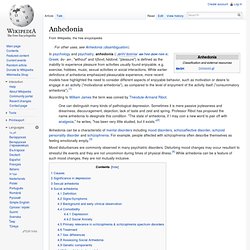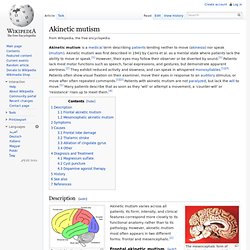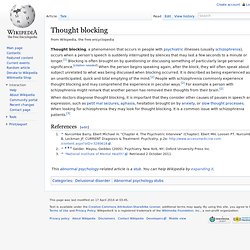

Dialectical Behaviour Therapy. An Overview of Dialectical Behaviour Therapy in the Treatment of Borderline Personality Disorder by Barry Kiehn and Michaela Swales Patients showing the features of Borderline Personality Disorder as defined in DSM-IV are notoriously difficult to treat (Linehan 1993a).

They are difficult to keep in therapy, frequently fail to respond to our therapeutic efforts and make considerable demands on the emotional resources of the therapist, particular when suicidal and parasuicidal behaviours are prominent. Dialectical Behaviour Therapy is an innovative method of treatment that has been developed specifically to treat this difficult group of patients in a way which is optimistic and which preserves the morale of the therapist.
The technique has been devised by Marsha Linehan at the University of Washington in Seattle and its effectiveness has been demonstrated in a controlled study, the results of which will be summarised later in this paper. 2. 3. 4. Core mindfulness skills. Body Scan - Guided Mindfulness Meditation. Mindfulness in Plain English - 5 to 6. Chapter 5 The Practice.

What if I find it hard to like myself? Bodhipaksa Many of us find the first stage of the Metta Bhavana the hardest to do, probably because some of our societal conditioning trains us to think that liking ourselves is bad.

In fact we have a whole page on this very subject. The first thing is that it’s very important to learn to like ourselves. If we don’t like ourselves we’re never going to truly love others. Nor are we likely to ever be very happy, simply because we don’t value our own happiness. So never skip the first stage of the Metta Bhavana practice. If you start the first stage and don’t feel much, then don’t panic. Think about things you do well. Anhedonia. In psychology and psychiatry, anhedonia (/ˌænhiˈdoʊniə/ AN-hee-DOH-nee-ə; Greek: ἀν- an-, "without" and ἡδονή hēdonē, "pleasure") is defined as the inability to experience pleasure from activities usually found enjoyable, e.g. exercise, hobbies, music, sexual activities or social interactions.

While earlier definitions of anhedonia emphasized pleasurable experience, more recent models have highlighted the need to consider different aspects of enjoyable behavior, such as motivation or desire to engage in an activity ("motivational anhedonia"), as compared to the level of enjoyment of the activity itself ("consummatory anhedonia").[1] According to William James the term was coined by Théodule-Armand Ribot. One can distinguish many kinds of pathological depression.
Sometimes it is mere passive joylessness and dreariness, discouragement, dejection, lack of taste and zest and spring. Professor Ribot has proposed the name anhedonia to designate this condition. Causes[edit] Akinetic mutism. Description[edit] Frontal akinetic mutism can occur after a frontal lobe injury The mesencephalic form of akinetic mutism occurs in the midbrain (4) Akinetic mutism varies across all patients.

Its form, intensity, and clinical features correspond more closely to its functional anatomy rather than to its pathology. Auditory processing disorder. Auditory processing disorder (APD), also known as central auditory processing disorder (CAPD), is an umbrella term for a variety of disorders that affect the way the brain processes auditory information.[1] Individuals with APD usually have normal structure and function of the outer, middle and inner ear (peripheral hearing).

However, they cannot process the information they hear in the same way as others do, which leads to difficulties in recognizing and interpreting sounds, especially the sounds composing speech. It is thought that these difficulties arise from dysfunction in the central nervous system (i.e., brain). APD does not feature in mainstream diagnostic classifications such as the Diagnostic and Statistical Manual of Mental Disorders, 4th Edition (DSM-IV). The American Academy of Audiology notes that APD is diagnosed by difficulties in one or more auditory processes known to reflect the function of the central auditory nervous system.[1] Definitions[edit] History[edit] Thought blocking. Thought blocking, a phenomenon that occurs in people with psychiatric illnesses (usually schizophrenia), occurs when a person's speech is suddenly interrupted by silences that may last a few seconds to a minute or longer.[1] Blocking is often brought on by questioning or discussing something of particularly large personal significance.

[citation needed] When the person begins speaking again, after the block, they will often speak about a subject unrelated to what was being discussed when blocking occurred. Alogia. Aboulia. THE STRANGER IN THE MIRROR - Dissociation: The Hidden Epidemic, Dr. Steinberg's Resource Website. Trait Dissociation and the Subjective Affective, Motivational, and Phenomenological Experience of Self-Defining Memories. Implicit Self-Esteem in Borderline Personality and Depersonalization Disorder. The Holy Grail of Curing DP/DR - Depersonalization & Derealization Discussion - Depersonalization Community. I won't lie, this is a repost of something "Copeful" posted way back in 2007.

However I found the information inside completely invaluable and think it should be posted and/or maybe pinned so that people can find the information with ease. Here's hoping it helps many people :] Thank you Copeful. Depersonalisation Research Unit. Depersonalisation Research Unit Depersonalisation Disorder (DPD) constitutes, according to the Psychiatric Diagnostic and Statistic Manual (DSM) IV, ‘a feeling of detachment or estrangement from one’s self.

The individual may feel like an automaton or as if he or she is living in a dream or a movie. There may be a sensation of being an outside observer of one’s mental processes, one’s body or parts of one’s body.’ People who experience depersonalisation may, at the same time, experience de-realisation, the sense that the external world is strange or unreal. People with a major psychiatric disorder, including severe anxiety or panic disorder, depression, post traumatic stress disorder, obsessive compulsive disorder and schizophrenia, and people with neurological conditions such as migraine and epilepsy, can experience depersonalisation as a symptom. Depersonalization / Derealization Disorder Symptoms. Persistent or recurrent experiences of feeling detached from, and as if one is an outside observer of, one’s mental processes or body (e.g., feeling like one is in a dream).

During the depersonalization experience, reality testing remains intact. The depersonalization causes clinically significant distress or impairment in social, occupational, or other important areas of functioning. The depersonalization experience does not occur exclusively during the course of another mental disorder, such as Schizophrenia, Panic Disorder, Acute Stress Disorder, or another Dissociative Disorder, and is not due to the direct physiological effects of a substance (e.g., a drug of abuse, a medication) or a general medical condition (e.g., temporal lobe epilepsy).
APA Reference Psych Central. (2013). Depersonalization / Derealization Disorder Symptoms. Symptom criteria summarized from: American Psychiatric Association. (2013). Meisner technique. The Meisner technique is an acting technique developed by the American theatre practitioner Sanford Meisner.[1] Components[edit] Meisner Training is an interdependent series of training exercises that build on one another.
The more complex work supports a command of dramatic text. Students work on a series of progressively complex exercises to develop an ability to first improvise, then to access an emotional life, and finally to bring the spontaneity of improvisation and the richness of personal response to textual work. The techniques developed the behavioral strand of Stanislavski's. Mindfulness-based stress reduction. Overview[edit] MBSR has been described as "a group program that focuses upon the progressive acquisition of mindful awareness, of mindfulness".
People enrolled in a MBSR program practice various meditation techniques, including those focussed on breathing and body awareness.[1] According to Jon Kabat-Zinn, the program's inventor, the basis of MBSR is mindfulness, which he defined as "moment-to-moment, non-judgmental awareness. F. YEN PIK SANG 2006.pdf (application/pdf Object) Buteyko method. Konstantin Pavlovich Buteyko The Buteyko method or Buteyko Breathing Technique is a form of complementary or alternative physical therapy that proposes the use of breathing exercises as a treatment for asthma as well as other conditions. The method takes its name from Ukrainian doctor Konstantin Pavlovich Buteyko, who first formulated its principles during the 1950s. This method is based on the assumption that numerous medical conditions, including asthma, are caused by chronically increased respiratory rate or deeper breathing (hyperventilation). However, this theory is not widely supported in the medical community due to the lack of evidence supporting either the theory behind the method or that it works in practice.
Mindfulness (psychology) Mindfulness as a psychological concept is the focusing of attention and awareness, based on the concept of mindfulness in Buddhist meditation.[1] It has been popularised in the West by Jon Kabat-Zinn.[2] Despite its roots in Buddhism, mindfulness is often taught independently of religion.[3][4] Clinical psychology and psychiatry since the 1970s have developed a number of therapeutic applications based on mindfulness for helping people suffering from a variety of psychological conditions.[5] Overcoming Depersonalization Disorder: A Mindfulness & Acceptance Guide to ... - Fugen Neziroglu, Katharine Donnelly. Dialectical behavior therapy. Dialectical behavior therapy (DBT) is a therapy designed to help people change patterns of behavior that are not effective, such as self-harm, suicidal thinking and substance abuse. This approach works towards helping people increase their emotional and cognitive regulation by learning about the triggers that lead to reactive states and helping to assess which coping skills to apply in the sequence of events, thoughts, feelings and behaviors that lead to the undesired behavior.
Depersonalization Recovery - Cure DP Disorder and Derealization Symptoms with this 10-Hour Video Program by Harris Harrington. .a wind of such violence.the work of plath. Depersonalization disorder. Index of /PDF Papers about Depersonalization Disorder/ Depersonalization Community.